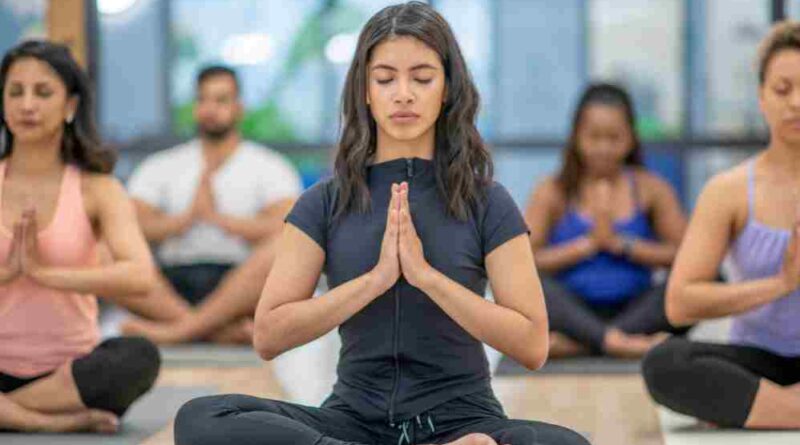Yoga Is Healing, But Not All Poses Are Friendly to Your Knees: An Expert Warns Against These 5 Asanas
Yoga has long been celebrated as a practice that strengthens the body, calms the mind, and restores balance to daily life. Yet, as countless people flock to studios and practice in their living rooms, a growing concern has emerged: not every asana is safe for every body, especially when it comes to the knees.
A veteran yoga teacher recently raised an alarm about certain postures that can cause long‑term damage when performed repeatedly or incorrectly. The expert emphasized that while yoga can be a powerful tool for overall health, a few popular poses put too much strain on the knees — a joint that is notoriously susceptible to wear and tear.
Why the Knee Is So Vulnerable in Yoga
The knees bear much of the body’s weight. When you twist, squat, or place pressure at awkward angles, this delicate hinge can easily be compromised. In yoga, especially for newcomers or those with pre‑existing discomfort, certain positions can intensify pressure and lead to strains, cartilage damage, or even serious injury over time.
“People assume that every yoga posture is universally beneficial, but that’s not the case,” the expert stated. “Each body is unique, and knees often bear the brunt of misplaced enthusiasm or improper technique.”
Five Yoga Poses to Approach with Caution
Here are five common yoga poses that, while beneficial for some, can cause significant knee discomfort — or damage — if done hastily or with misalignment:
- Padmasana (Lotus Pose):
Often associated with deep meditation and serenity, this iconic posture demands significant hip and knee flexibility. Without the requisite openness in the hips, the knees end up twisting beyond their natural range, leading to discomfort or ligament strain. - Virasana (Hero Pose):
While it’s a classic seated posture, this one can put direct pressure on the knees and ankle joints, especially for those with tight quadriceps. The expert advises practicing with props — like a block or cushion — or skipping altogether if the knees complain. - Eka Pada Rajakapotasana (Pigeon Pose):
This deep hip opener can aggravate the knees if one’s hips aren’t adequately prepared. The risk? The knees bear too much twisting force, causing sharp discomfort and, in some cases, long‑term injury. - Baddha Konasana (Butterfly Pose):
Although this posture appears gentle, it can strain the knees if forced beyond their natural range of motion. The expert urges yogis to listen to their body, use supports, and never force the knees closer to the floor. - Malasana (Garland Pose):
Deep squats can be a wonderful way to open the hips, but when performed without enough strength or awareness, the knees bear a disproportionate load. “This is especially risky for those with pre‑existing knee discomfort,” the teacher explained.
Prioritize Alignment and Awareness
The takeaway? Yoga can be a beautiful and enriching practice, but it must honor the body’s limits. According to the expert, aligning poses properly, warming up adequately, and choosing alternatives when needed can make the difference between long‑term well‑being and long‑term damage.
“Yoga is about listening to your body, not forcing it into shapes it’s not ready for,” she said. “Knees don’t have to be sacrificed for the sake of a posture. True yoga is about making space — for strength, for growth, and for safety.”
Tips for Protecting Your Knees During Practice
- Always warm up before tackling deep stretches.
- Use props like blocks, bolsters, or straps when needed.
- Focus on hip and ankle mobility to reduce strain on the knees.
- Consult a teacher or medical expert if discomfort persists.
- Never force a position for the sake of “achieving” a posture.
The Final Word: Yoga Should Never Be a Battle
Yoga is about fostering a sense of balance and ease, both within the body and the mind. The expert’s message is a reminder that every pose should serve this greater goal. It’s okay — and often necessary — to skip or modify postures that don’t suit your body. After all, the best practice is the one that supports long‑term health and happiness.
In a world where yoga has become a global phenomenon, this is a vital lesson for every practitioner to carry on their mat: Listen to your body, respect its limits, and remember that sometimes the most advanced pose is the one you don’t force at all.
Disclaimer
The information and content shared on digitalgithub.com — including articles, blogs, news, guides, and other resources — is intended for general informational and educational purposes only. We do not guarantee the completeness, reliability, or suitability of any information. Always seek the guidance of a qualified professional before making decisions based on the information you read. Use this site at your own risk.

